Christmas festivities are incomplete without the glorious presence of a delicious cake. The scent of warm spices, the vibrant frosting colours, and the joyous anticipation of sharing a mouthwatering slice can make your festive season delightful. Whether you are an amateur home baker or a seasoned pastry chef, baking a beautiful Christmas cake is not just about satiating sweet cravings but also about embracing the soul of the togetherness that the holiday season represents.
This blog offers different Christmas cake ideas, making your holiday cheer a tad bit sweeter. From traditional favourites to global delights and from simple bakes to intricate creations, these Christmas cake recipes have a little bit of everything for everyone. So, buckle up and dive into this savoury, sweet journey that promises to fill your home with the delightful aroma of love and warmth.
Top 20 Christmas Cake Ideas from Around the World
The Christmas cake tradition boasts a variety of flavours, decorations, and baking techniques that have been passed down through generations and across continents. Each cake recipe carries the signature holiday spirit infused with cultural uniqueness. Here are twenty globally inspired Christmas cake ideas straight from the heart of these rich traditions.
1. Chocolate Bundt Cake
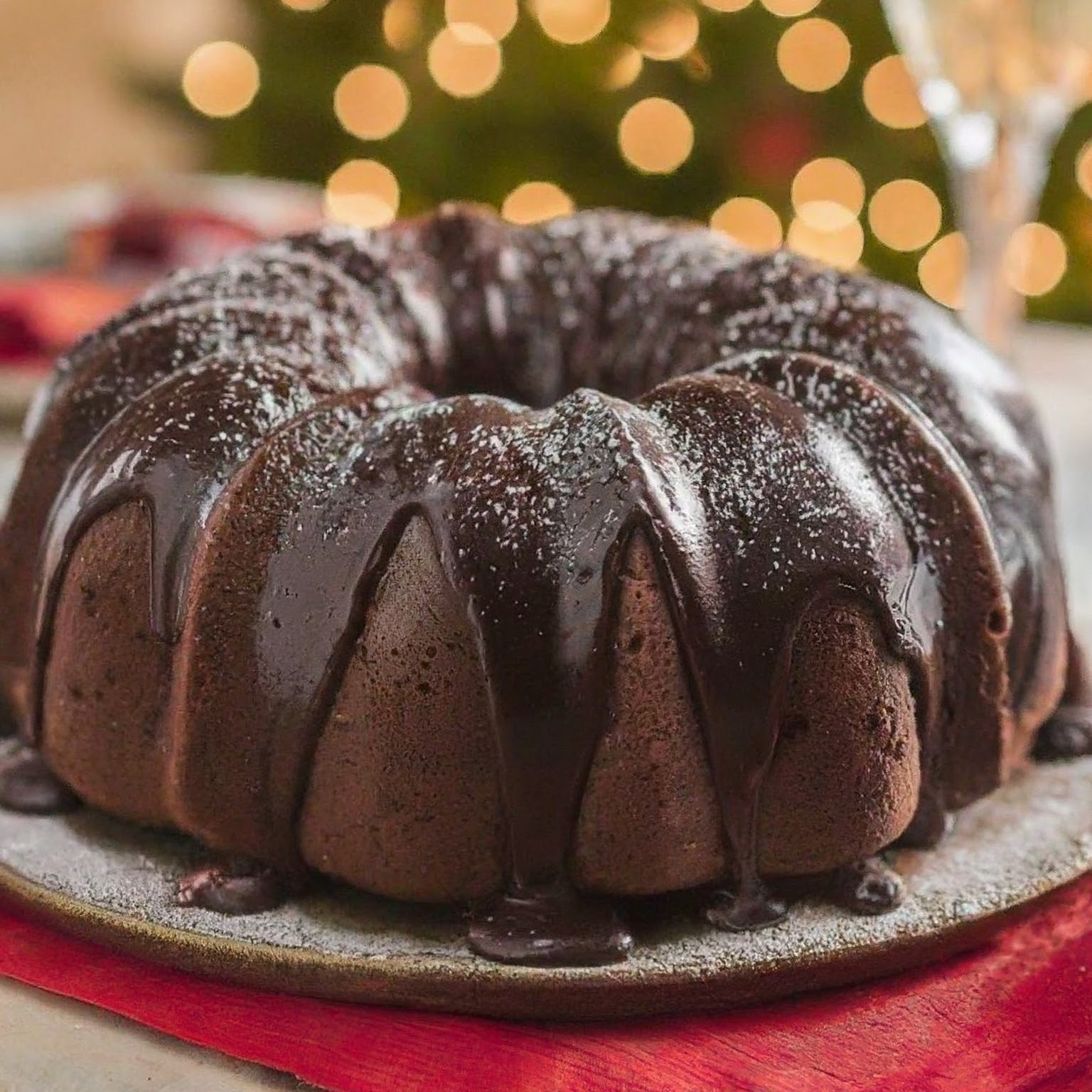
Chocolate Bundt Cake
The Chocolate Bundt Cake is a chocolate lover’s dream come true. This fudgy delight combines intense cocoa, sugar, and cream to create a decadent treat. Baked to perfection in a Bundt mould, it is topped with a rich chocolate ganache and powdered sugar for a snowy touch. Enjoy this rich cake with vanilla ice cream or a freshly brewed cup of coffee for the perfect end to your Christmas meal.
2. Chocolate Raspberry Cake
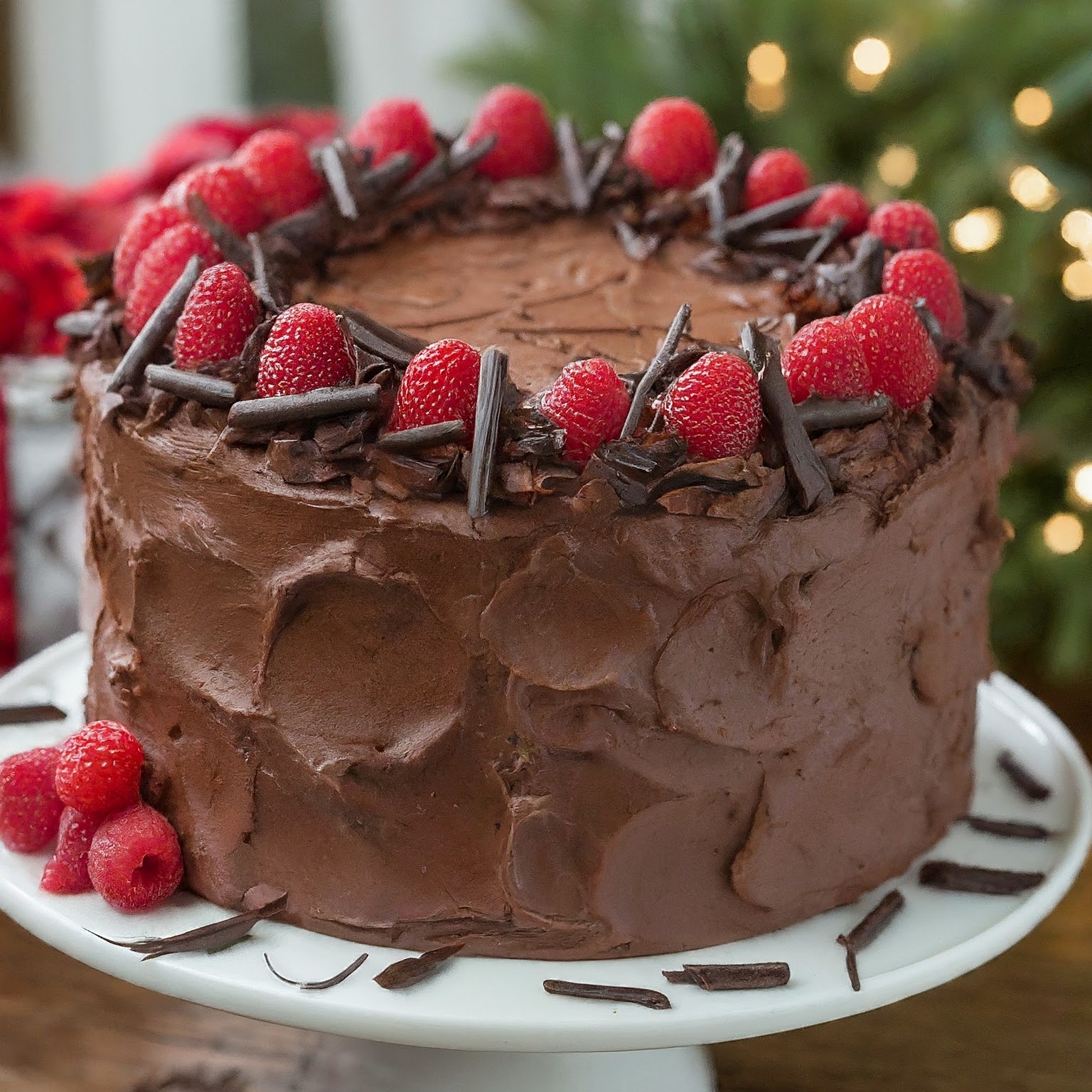
Chocolate Raspberry Cake
Indulge in this festive Christmas cake’s delightful blend of chocolate and raspberry. The rich chocolate layers pair perfectly with the tangy raspberry filling, all wrapped in a luscious chocolate frosting. Topped with fresh raspberries and chocolate curls, this cake is sure to impress as a stunning centrepiece for your holiday spread.
3. Candy Cane Cake
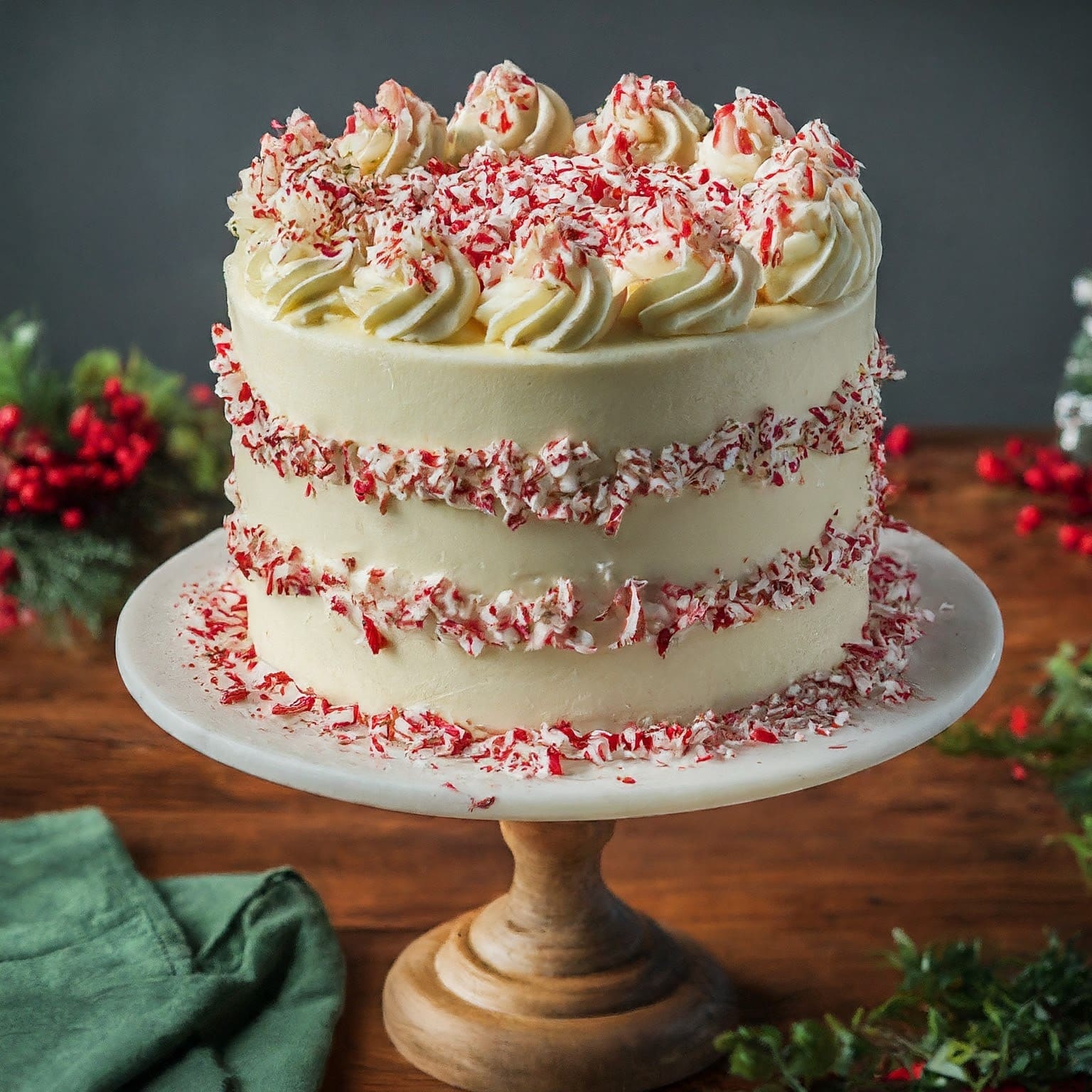
Candy Cane Cake
Give your holiday desserts an instant upgrade with the Candy Cane Cake! Featuring white cake layers with minty candy cane bits and cream cheese frosting, this cake is a delight for peppermint enthusiasts. Adorned with crushed candy canes, it mirrors the iconic red-and-white candy cane stripes. The tanginess of the cream cheese balances the sweetness, making it a perfect treat for the festive season. It seamlessly complements holiday decor, serving as a delectable centrepiece.
4. Ugly Sweater Cake
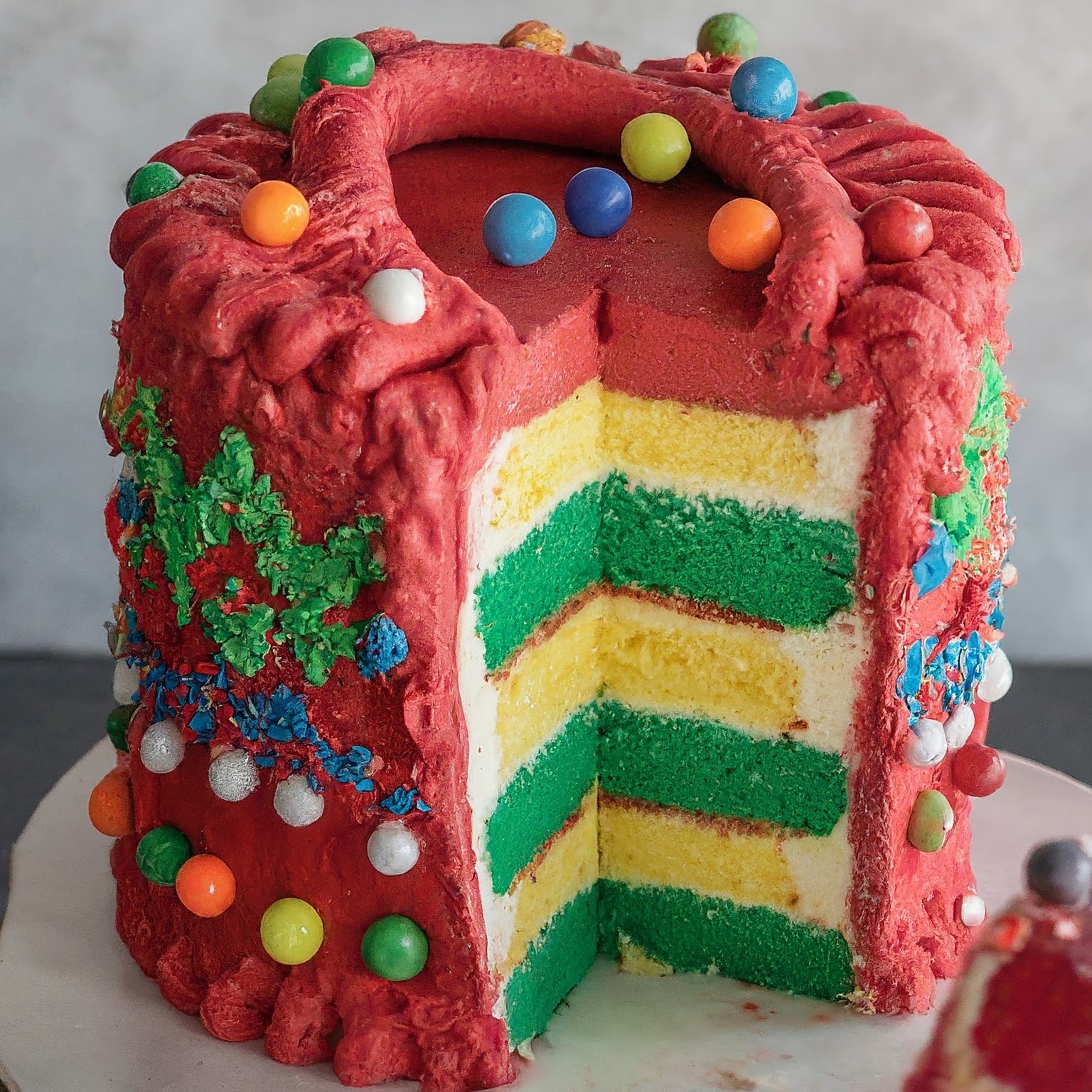
Ugly Sweater Cake
Make your Christmas party a hit with the visually alluring Ugly Sweater Cake. This cake mirrors the trend of festive sweaters with quirky designs and takes it to the dessert table! Start with a basic cake and create the “sweater” with creatively piped icing lines. Decorate with colourful icing, candies, and sprinkles for a conversation-generating masterpiece. Get ready for a frosting adventure with this fun cake idea!
5. Christmas Tree Cake
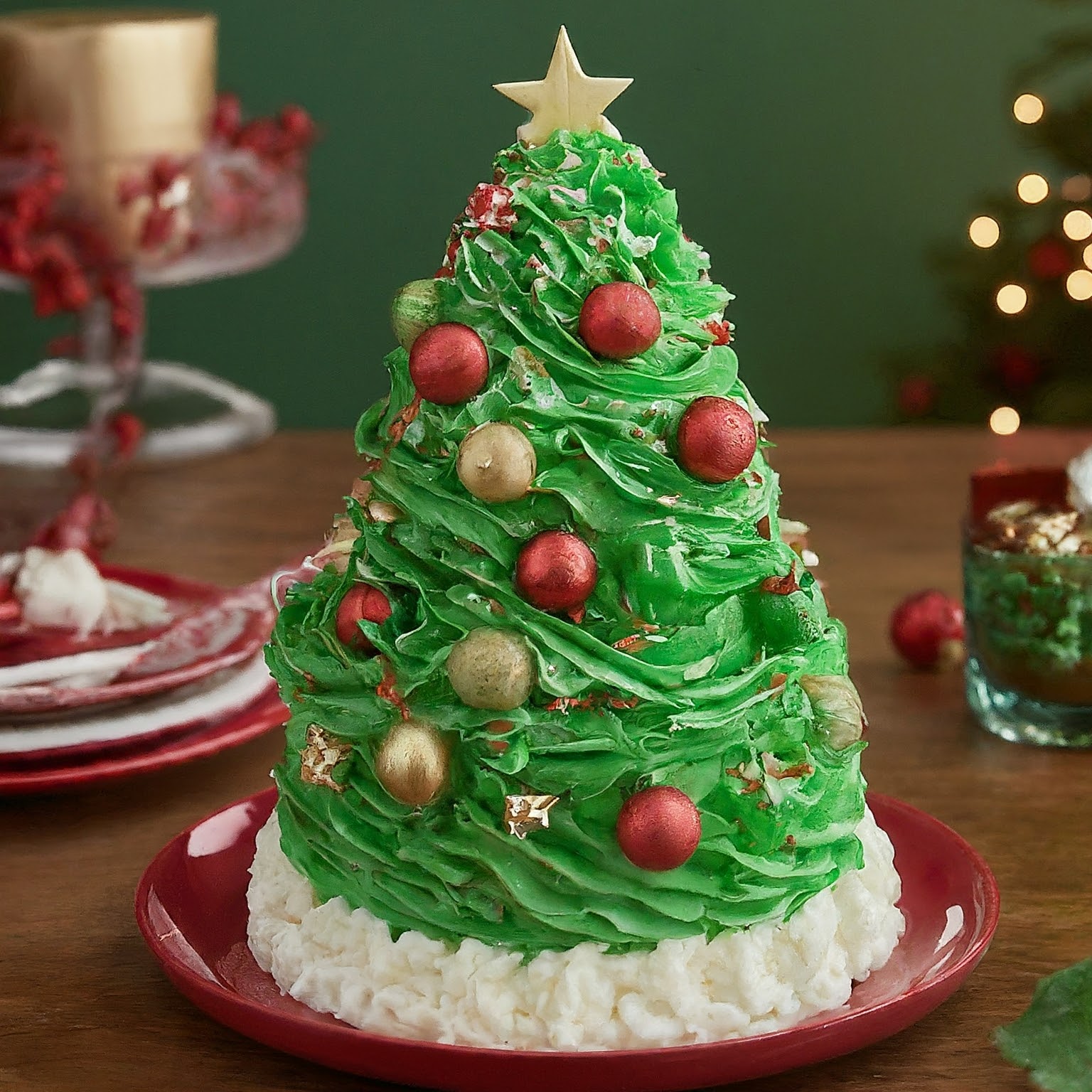
Christmas Tree Cake
The Christmas Tree Cake is a showstopper that will steal the spotlight on your holiday table. Resembling a festive tree, it’s a surefire way to spread the holiday cheer. Featuring a multi-tiered base of your favourite chocolate or vanilla cake, topped with green-tinted buttercream frosting and adorned with ornaments and a star, this culinary wonder will captivate guests of all ages.
6. Peppermint Cheesecake
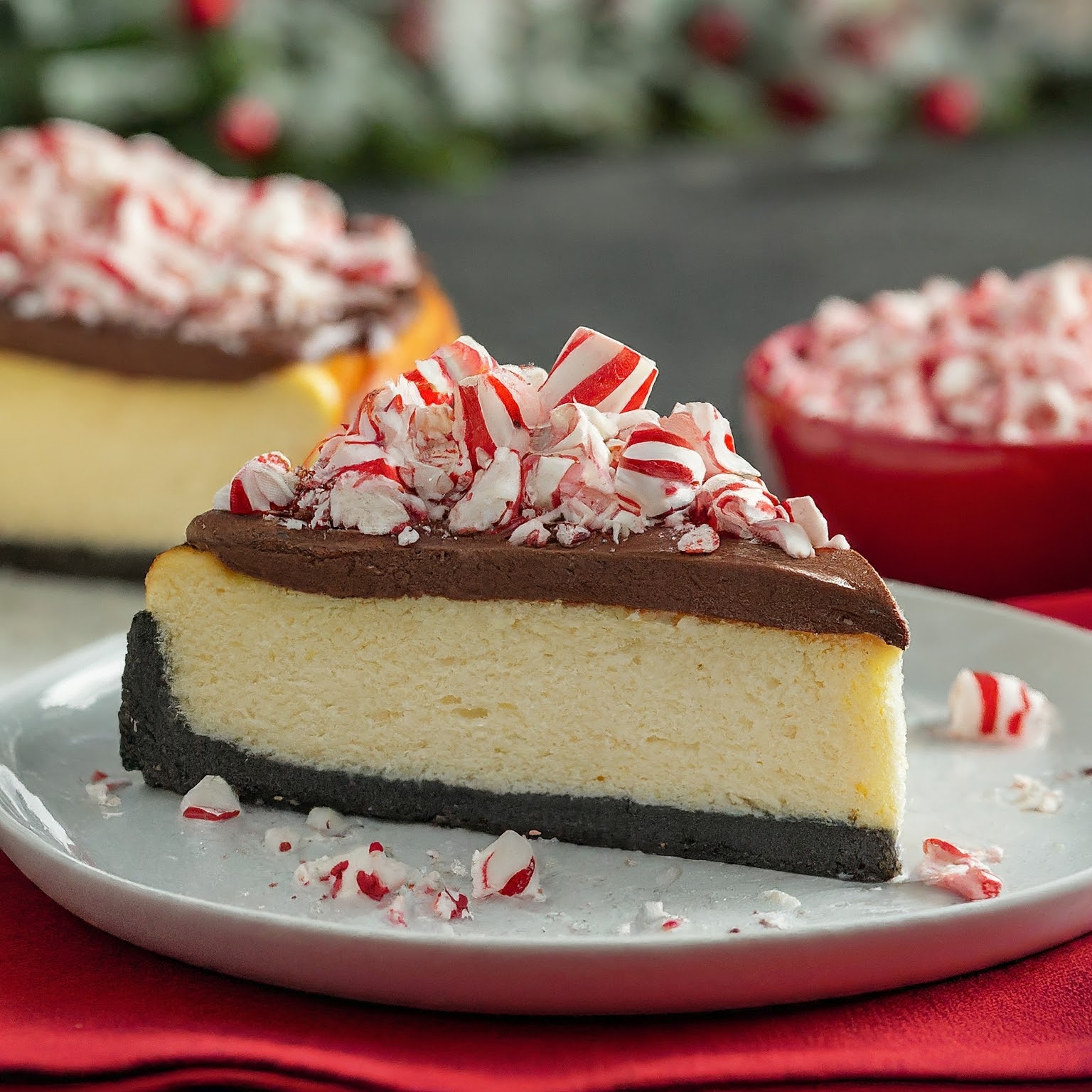
Peppermint Cheesecake
The Peppermint Cheesecake combines Peppermint Bark and Cheesecake in a decadent holiday dessert. A crunchy Oreo crust holds a smooth, peppermint-infused cheesecake layer topped with rich chocolate ganache and crushed candy canes. This nostalgic treat is perfect for winter mint lovers and can be made ahead of time, allowing you to focus on your Christmas spread.
7. Sticky Toffee Pudding
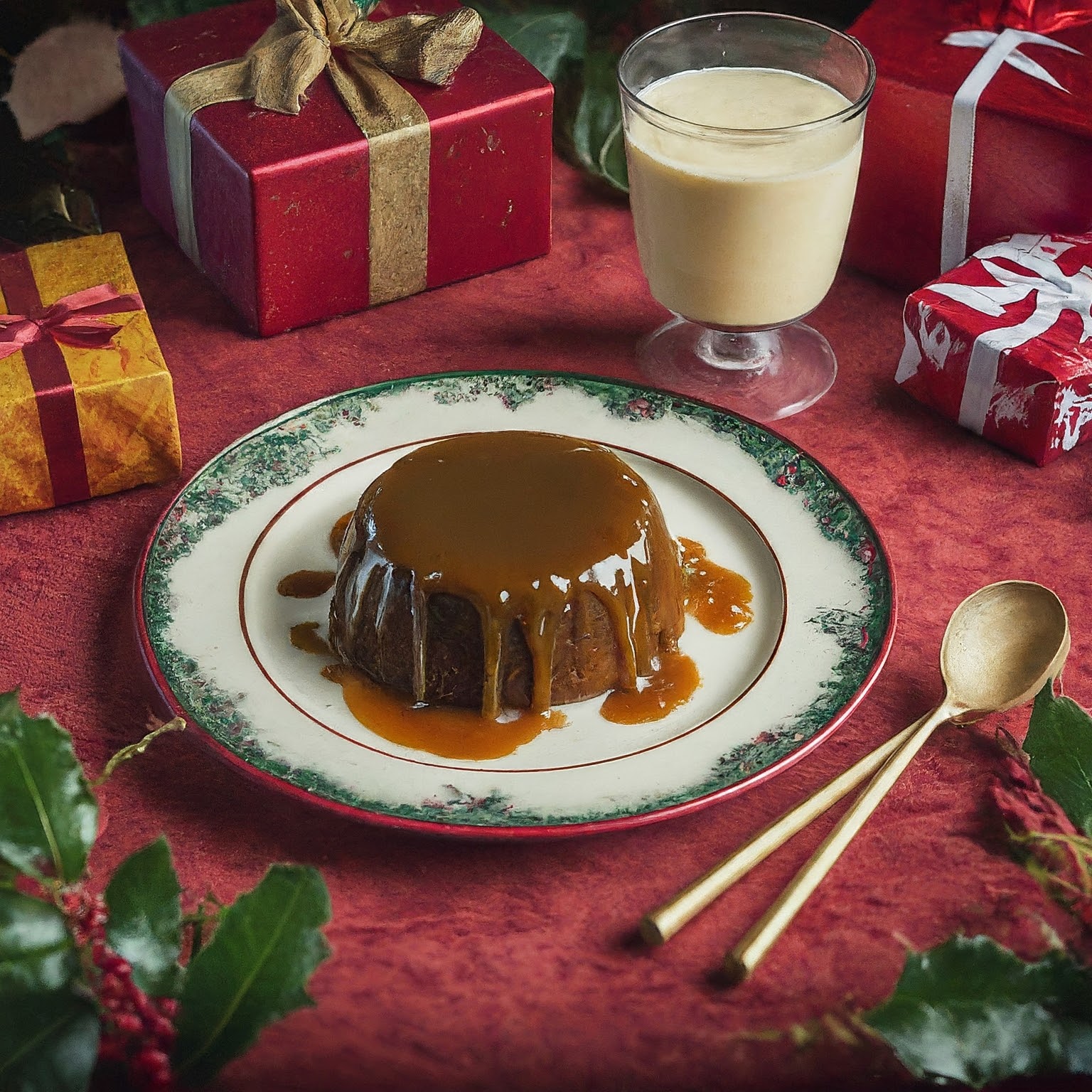
Sticky Toffee Pudding
The Sticky Toffee Pudding, a British Christmas treat, combines dates and a rich toffee sauce on a moist sponge cake. High-quality dates are soaked in water and baking soda for a soft, flavorful crumb. Serve warm with extra toffee sauce or vanilla ice cream for a delightful explosion of flavours.
8. Eggnog Cake
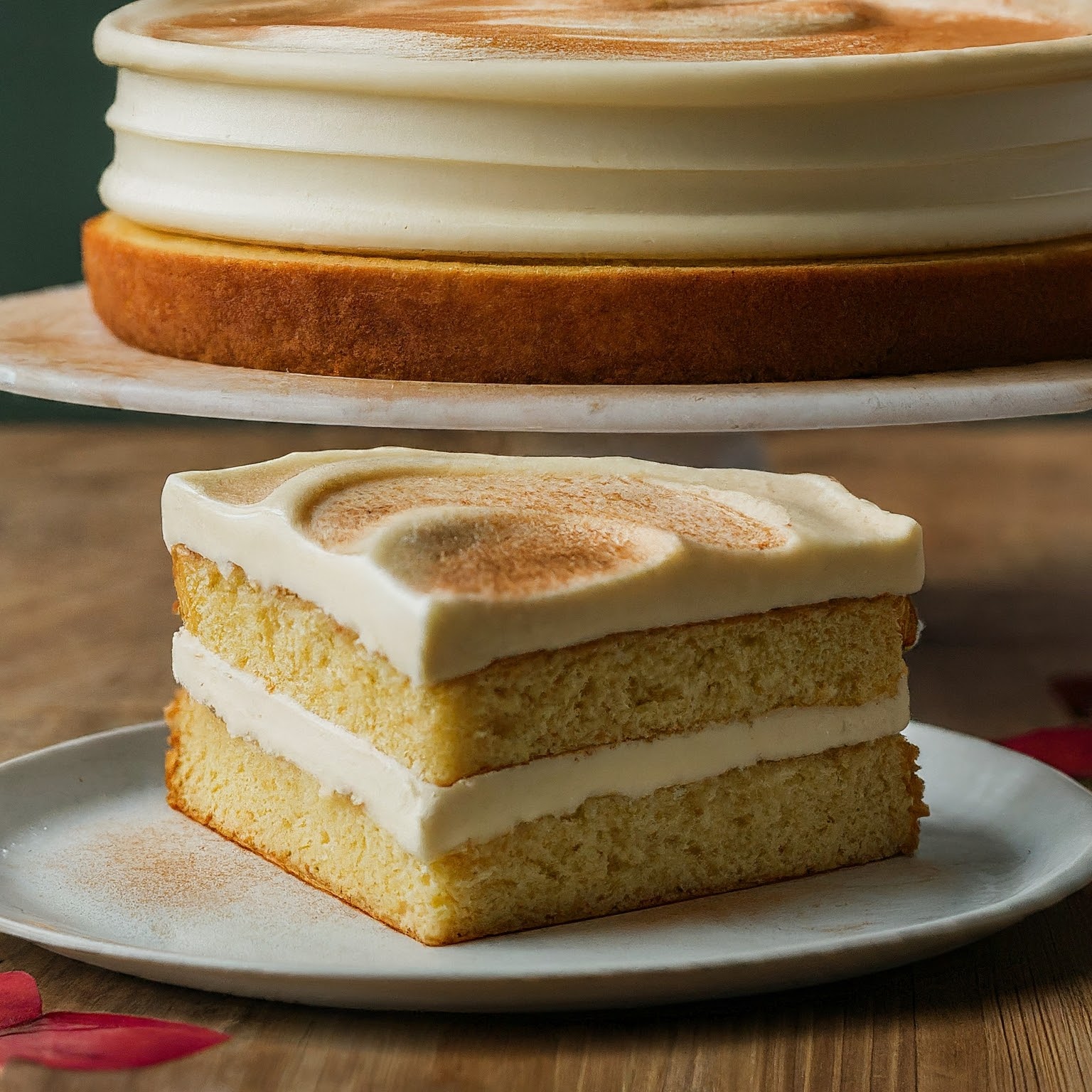
Eggnog Cake
This delightful Eggnog Cake shines with the festive flavour of Eggnog. With traditional ingredients like cream, sugar, eggs, and nutmeg, this cake will surely bring your taste buds joy. The batter is infused with freshly grated nutmeg for warmth, while the custard-based frosting includes whipped cream and a hint of rum extract. Decorate with festive sprinkles or icing for a standout Christmas dessert.
Also, check out our recipe for homemade non-alcoholic eggnog.
9. Snowman Cupcakes
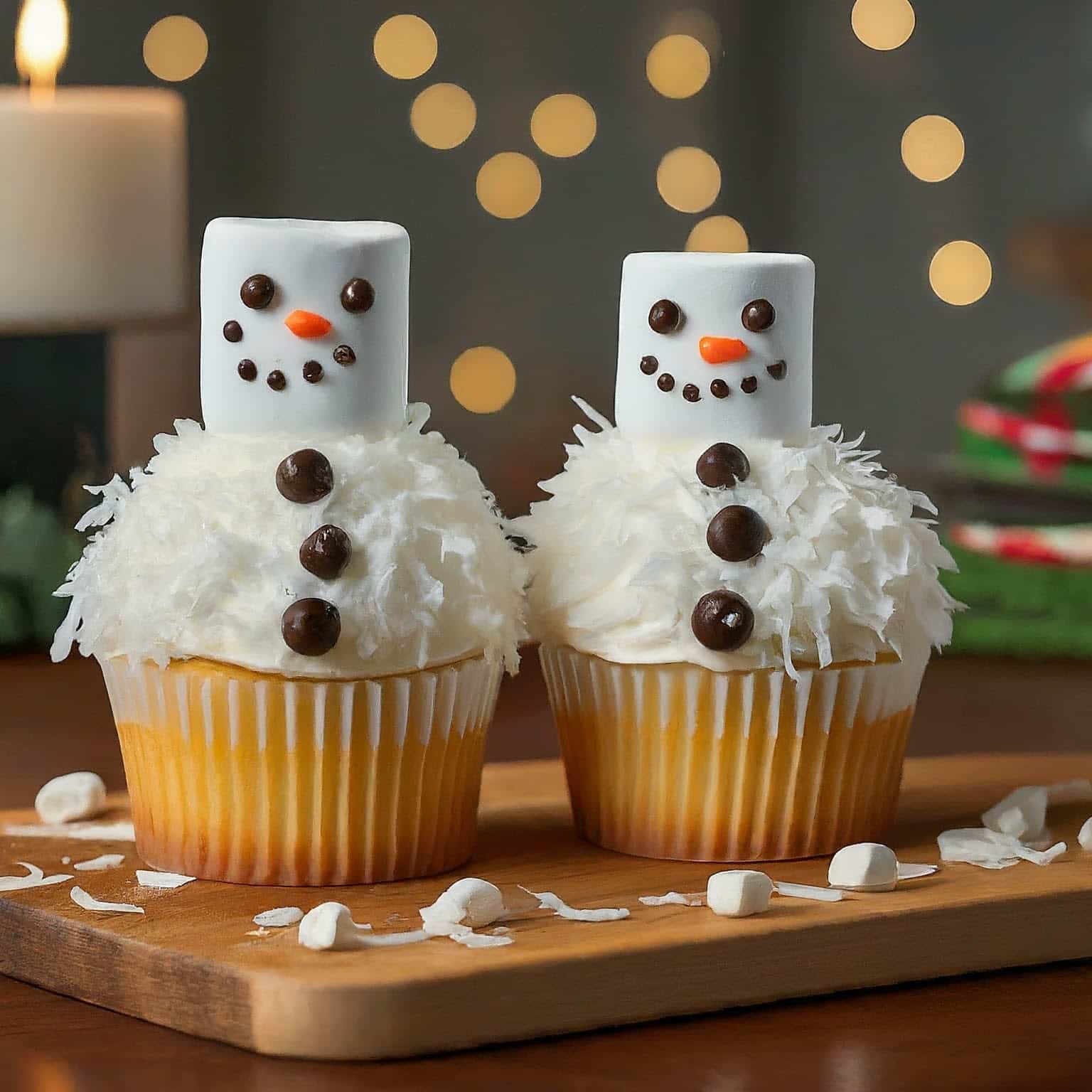
Snowman Cupcakes
Add some festive cheer to your holiday celebrations with these charming Snowman Cupcakes. You can easily create these adorable treats using frosting, coconut flakes, marshmallows, and a dash of creativity. Perfect for kids to decorate and enjoy, the coconut flakes mimic snow, adding visual appeal and texture. These cupcakes are sure to bring joy to all ages and spread Christmas cheer.
10. Pine Tree Forest Cake
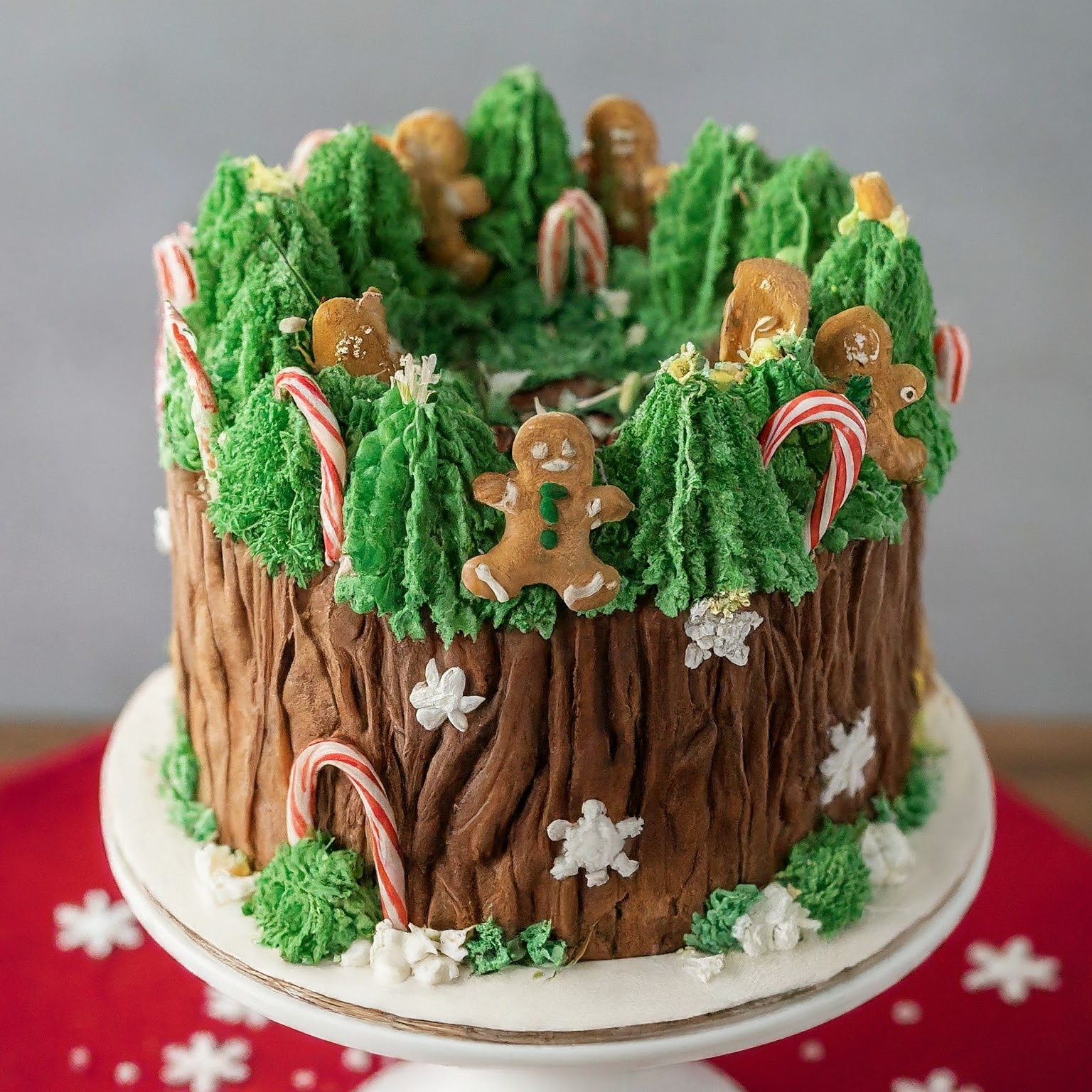
Pine Tree Forest Cake
Indulge in a winter wonderland with the Pine Tree Forest Cake. This chocolate cake is adorned with green frosting and shaped into a captivating forest scene. Delicate powdered sugar resembles snow, creating a magical edible landscape. The frosting technique used forms stunning pine trees, enhancing the cake’s appearance. Elevate your baking skills and impress your guests this holiday season with this visually stunning dessert!
11. Stained Glass Cake
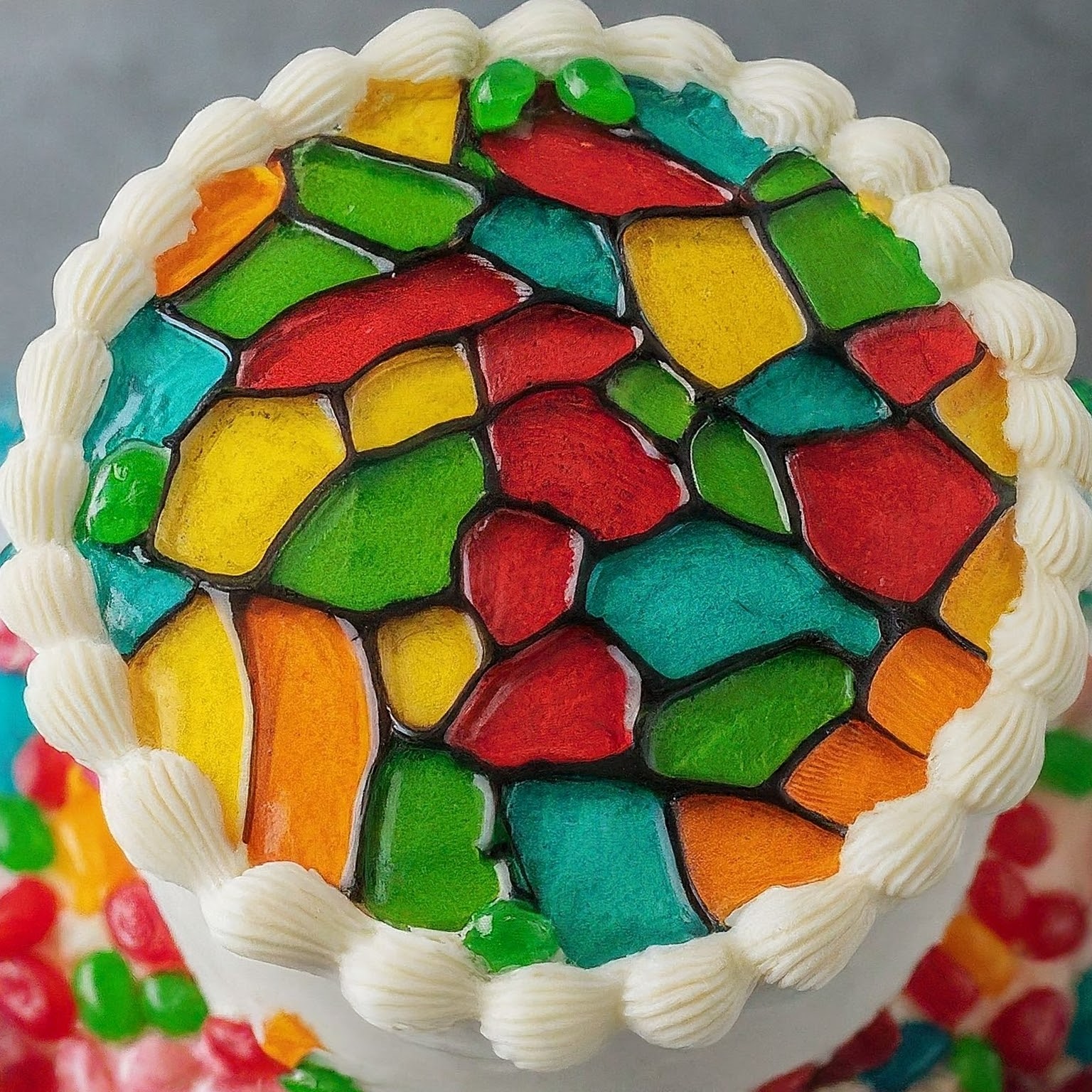
Stained Glass Cake
The Stained Glass Cake is a visually stunning and delicious choice for Christmas festivities. Featuring a tangy lemon poppy-seed base cake, white frosting, and melted Jolly Rancher candies for a colourful “glass” topping, this cake is simple to make yet guarantees a striking impact. Impress your guests with this beautiful centrepiece at your holiday gathering.
12. Citrus Upside Down Cake
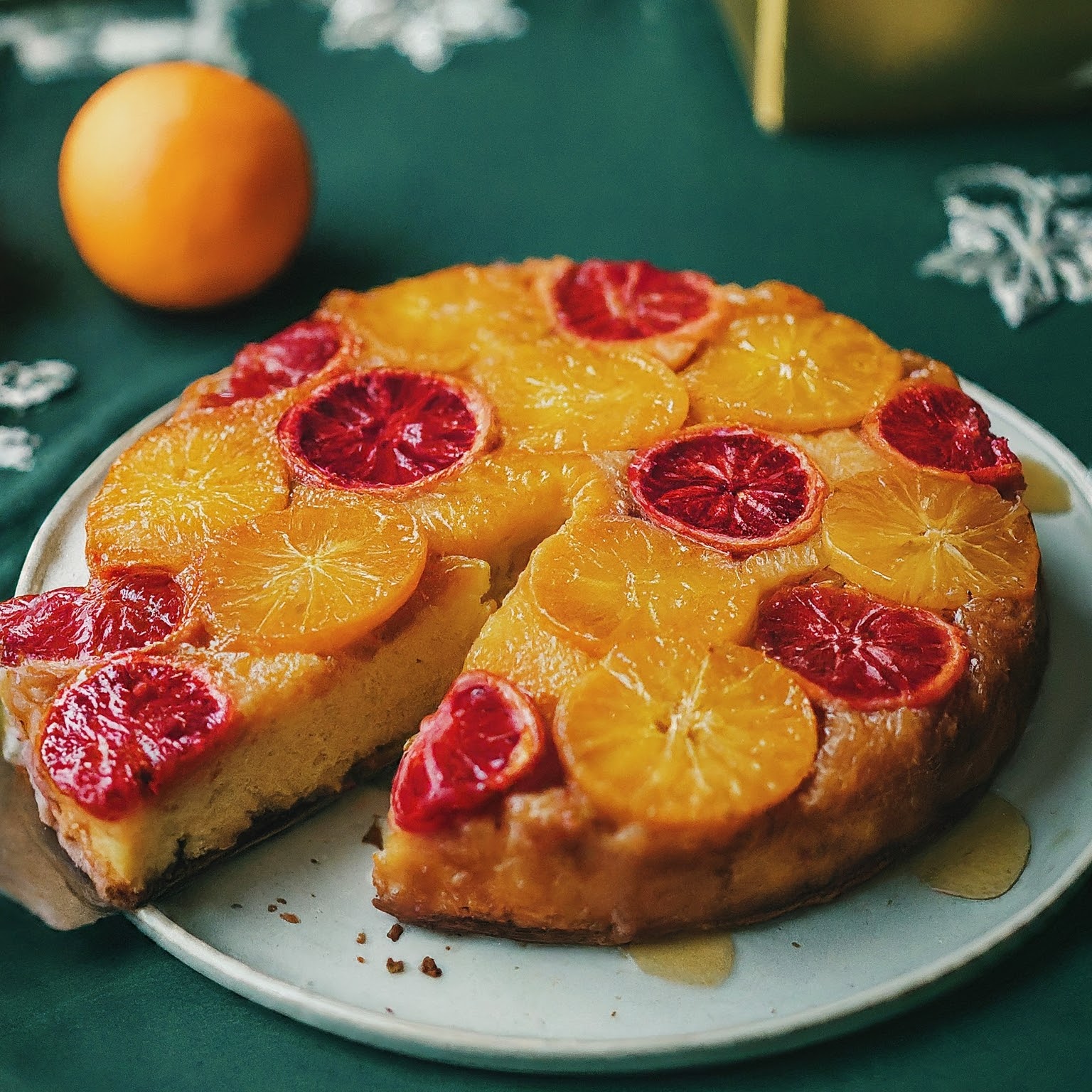
Citrus Upside Down Cake
The Citrus Upside Down Cake is a delightful burst of fresh, tangy flavours that stand out among traditional Christmas cakes. Adorned with brilliantly coloured citrus fruits on top and caramelised slices at the bottom, this cake offers a refreshing and moist dessert experience. If you prefer a lighter, brighter dessert after a heavy festive meal, this cake is perfect!
13. Gingerbread Cake
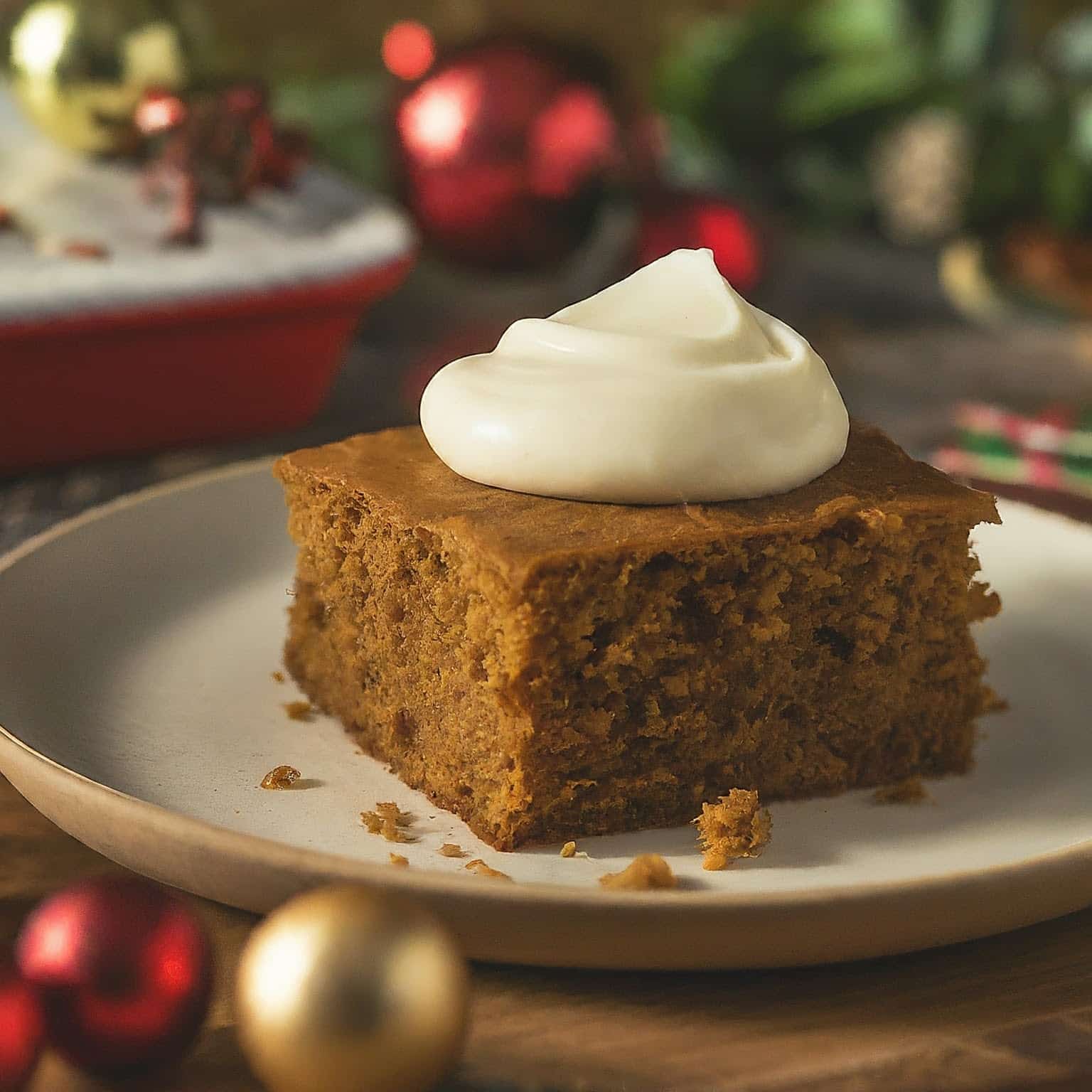
Gingerbread Cake
Nothing embodies the essence of Christmas quite like the warm, inviting scent of freshly baked Gingerbread. Infused with a blend of cinnamon, ginger, nutmeg, and cloves and sweetened with molasses, this cake captures the true spirit of the holiday season. The rich, moist layers are perfectly complemented by a decadent cream cheese frosting, creating a harmonious blend of flavours. Enjoy a taste of tradition and comfort in every bite with this delightful Gingerbread Cake.
14. Cranberry Cake
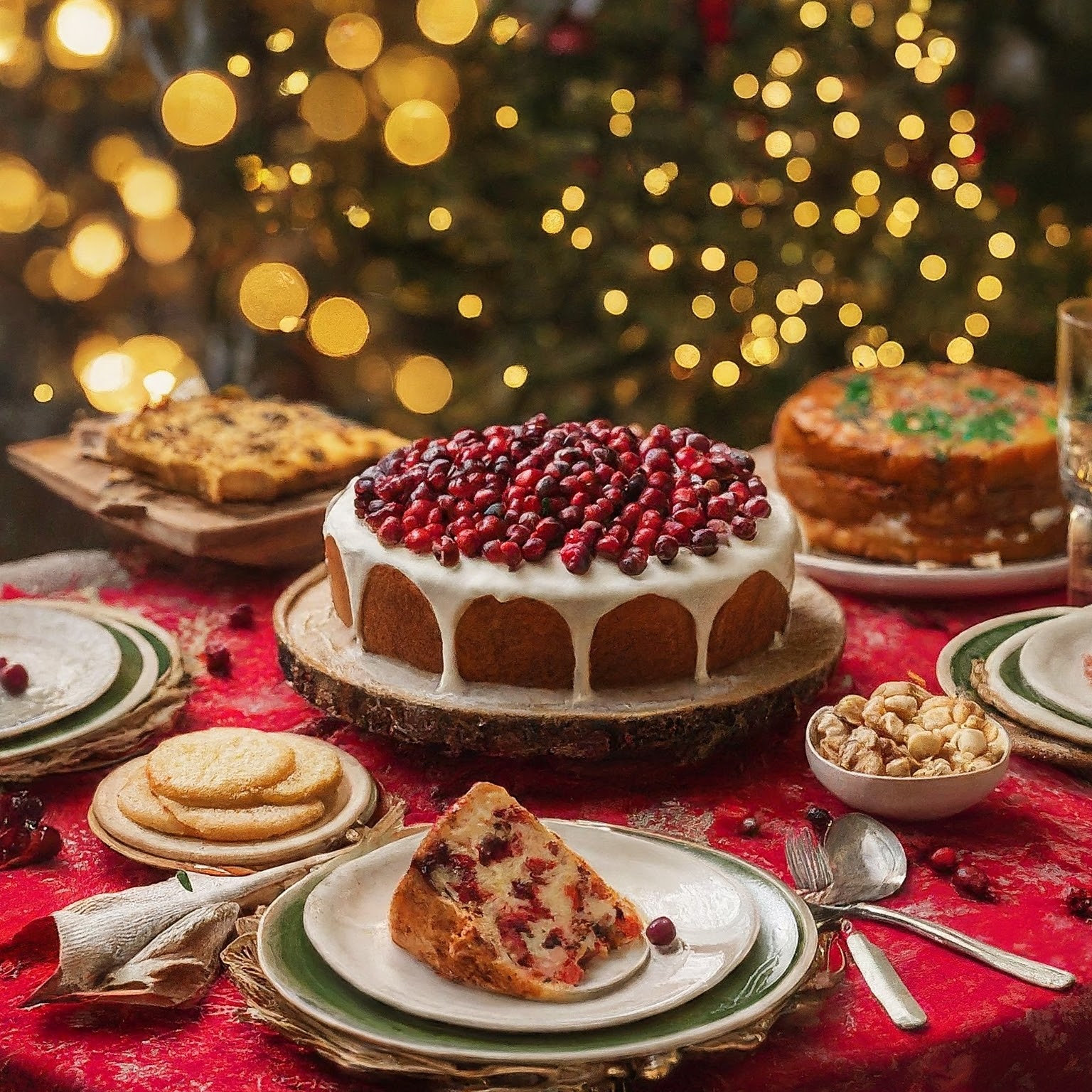
Cranberry Cake
Celebrate the holiday season with the tangy and sweet Cranberry Cake. Fresh cranberries burst with flavour in a tender crumb topped with a sugary crunch. This cake is perfect for breakfast or a light dessert after a heavy meal. A citrus glaze adds zing to this festive favourite, showcasing the best seasonal produce.
15. Chocolate Yule Log Cake
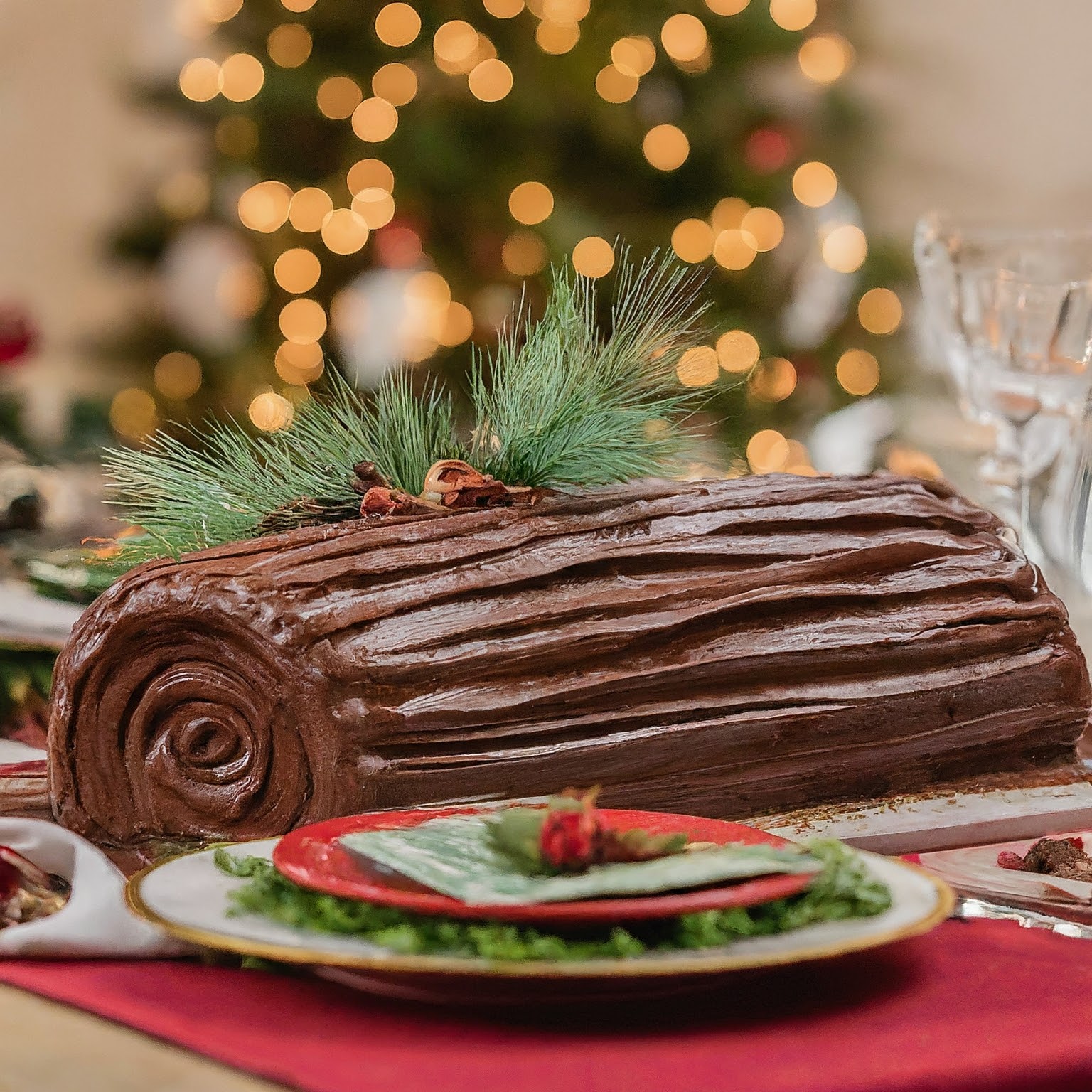
Chocolate Yule Log Cake
Revisit the timeless tradition of Yule logs with the impressive Chocolate Yule Log Cake, also known as Bûche de Noël in France. This decadent treat features a soft chocolate sponge cake filled with creamy chocolate filling and dusted with icing sugar to resemble a snow-covered log. The bark effect is achieved by swirling a fork through the chocolate ganache frosting, creating a cosy, fireside Christmas ambience. Easy to make and delicious to enjoy, this classic dessert is a must-have for your holiday celebrations.
16. Rosemary-Lemon Bundt Cake with Candied Rosemary
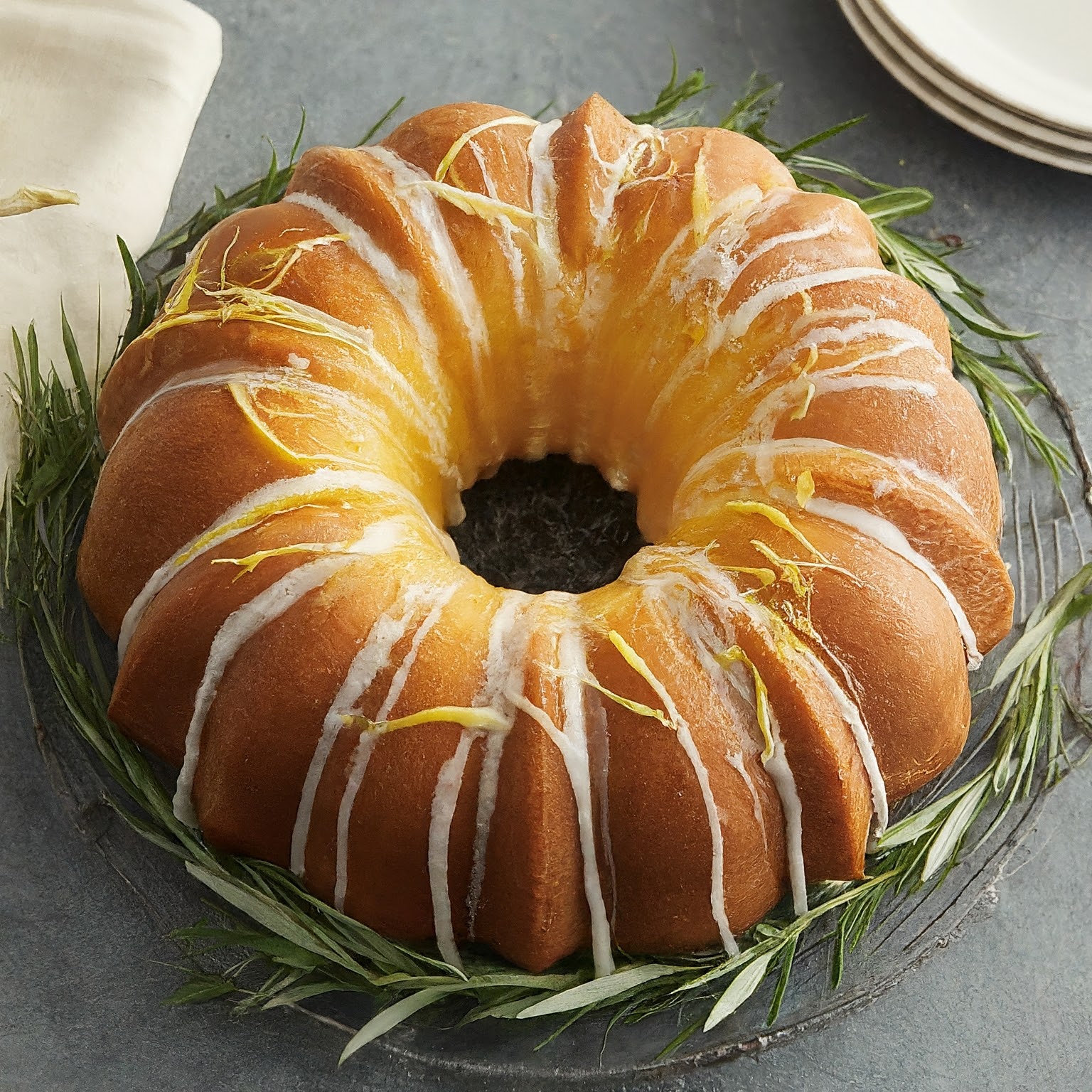
Rosemary Lemon Bundt Cake with Candied Rosemary
Diverge from the usual sweet treats and savour the sophisticated Rosemary-Lemon Bundt Cake. This cake offers a unique and delightful taste, featuring the distinct flavours of rosemary and lemon. Rosemary is infused in the batter, adding an earthy touch to the zesty lemon. Adorned with candied rosemary sprigs and a white glaze, this cake is a refreshing twist on traditional holiday desserts.
17. Vanilla Almond Cake
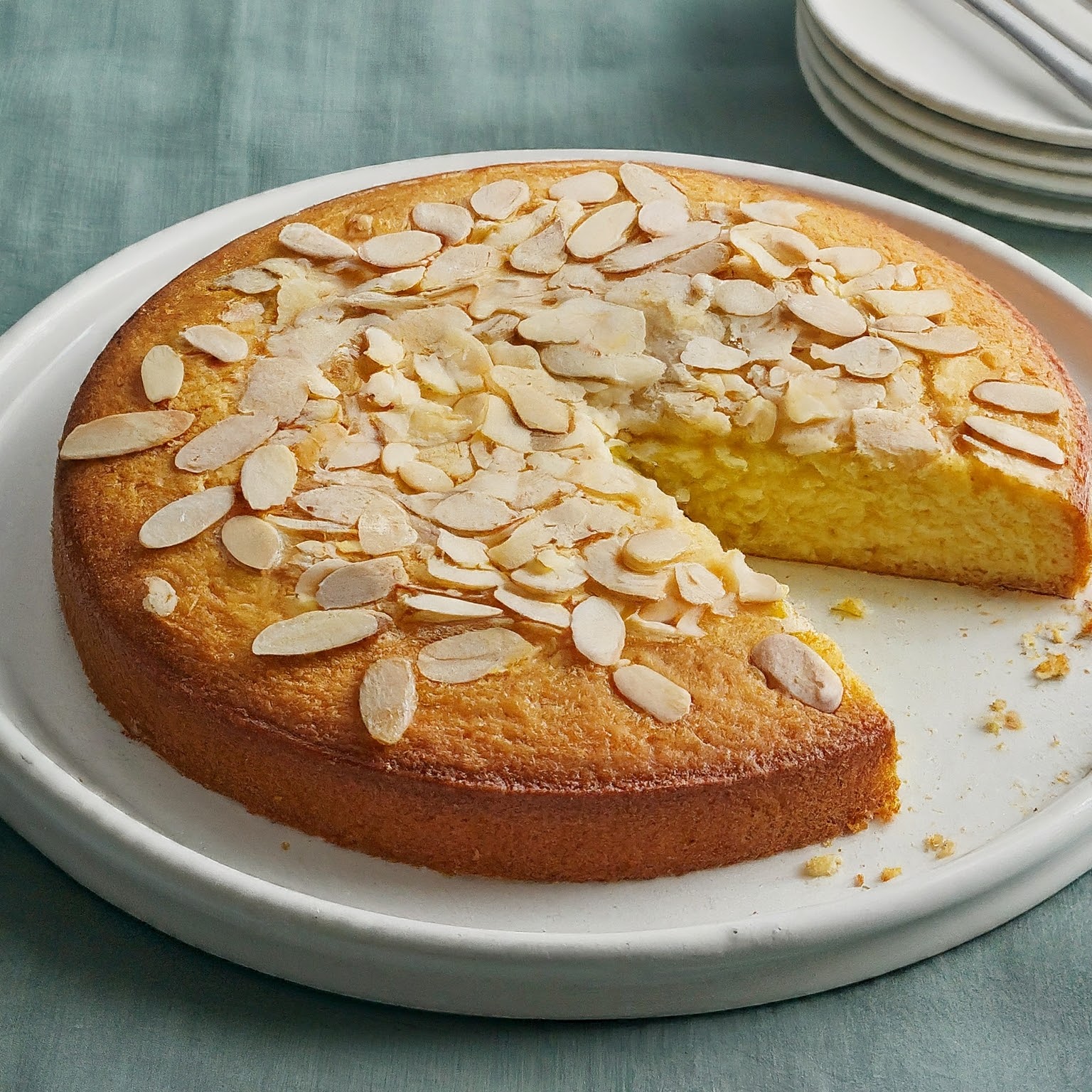
Vanilla Almond Cake
The Vanilla Almond Cake combines vanilla’s simplicity with almonds’ nuttiness, creating a tender and moist cake. Adding almond extract enhances the nutty flavour while dusting powdered sugar adds a touch of elegance. Perfect for tea time or as a post-dinner treat, this cake is a hassle-free yet delicious holiday baking project.
18. Christmas Pudding
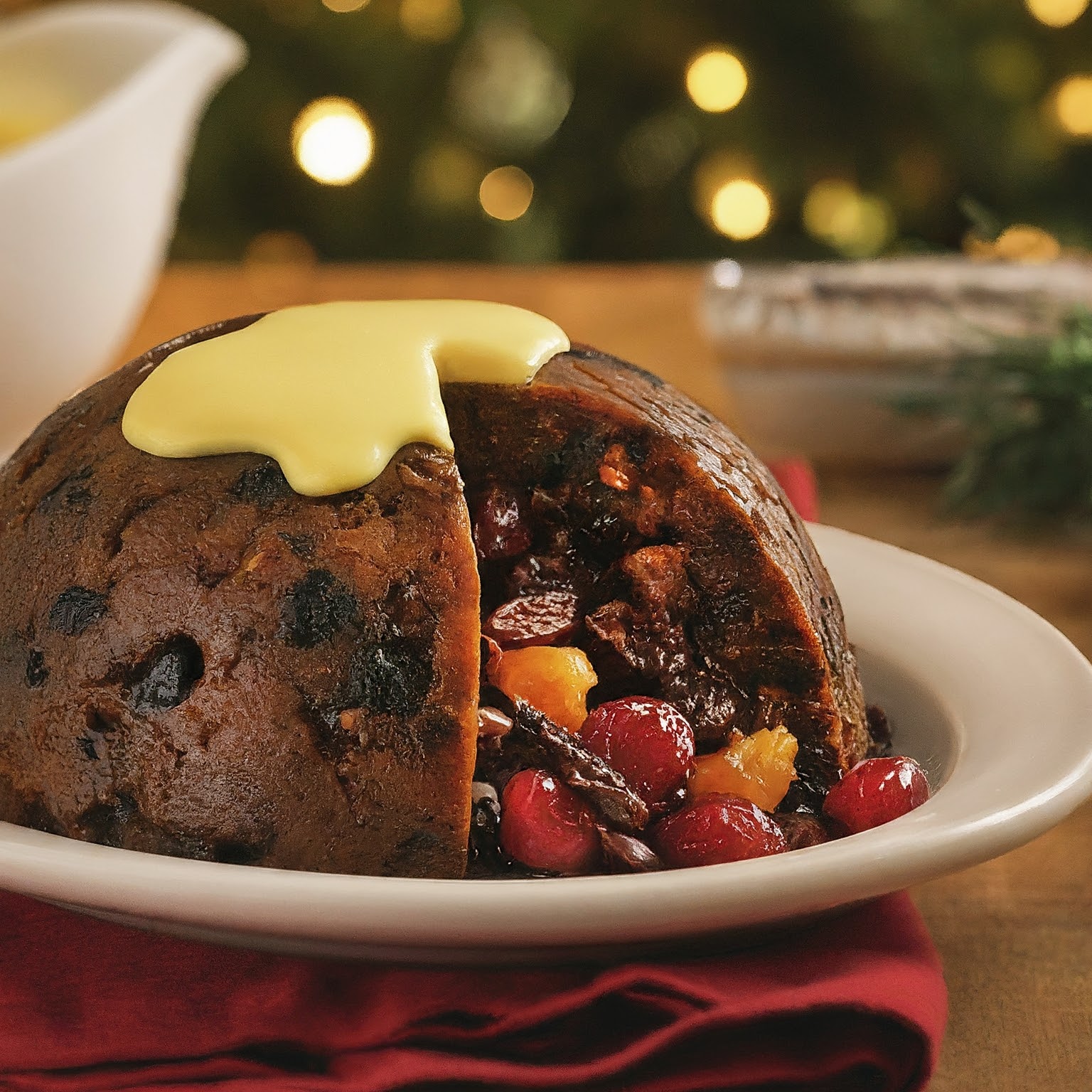
Christmas Pudding
A traditional British Christmas is incomplete without Christmas Pudding, also known as Plum Pudding. This fruity-spiced cake is a delightful blend of dried fruits, mixed peel, nuts, and warm spices like cinnamon, nutmeg, cloves, and mace. Laced with brandy or beer, this cake is served warm, flambéed, and paired with brandy butter or vanilla custard for a decadent finish to your holiday feast.
19. Fruitcake
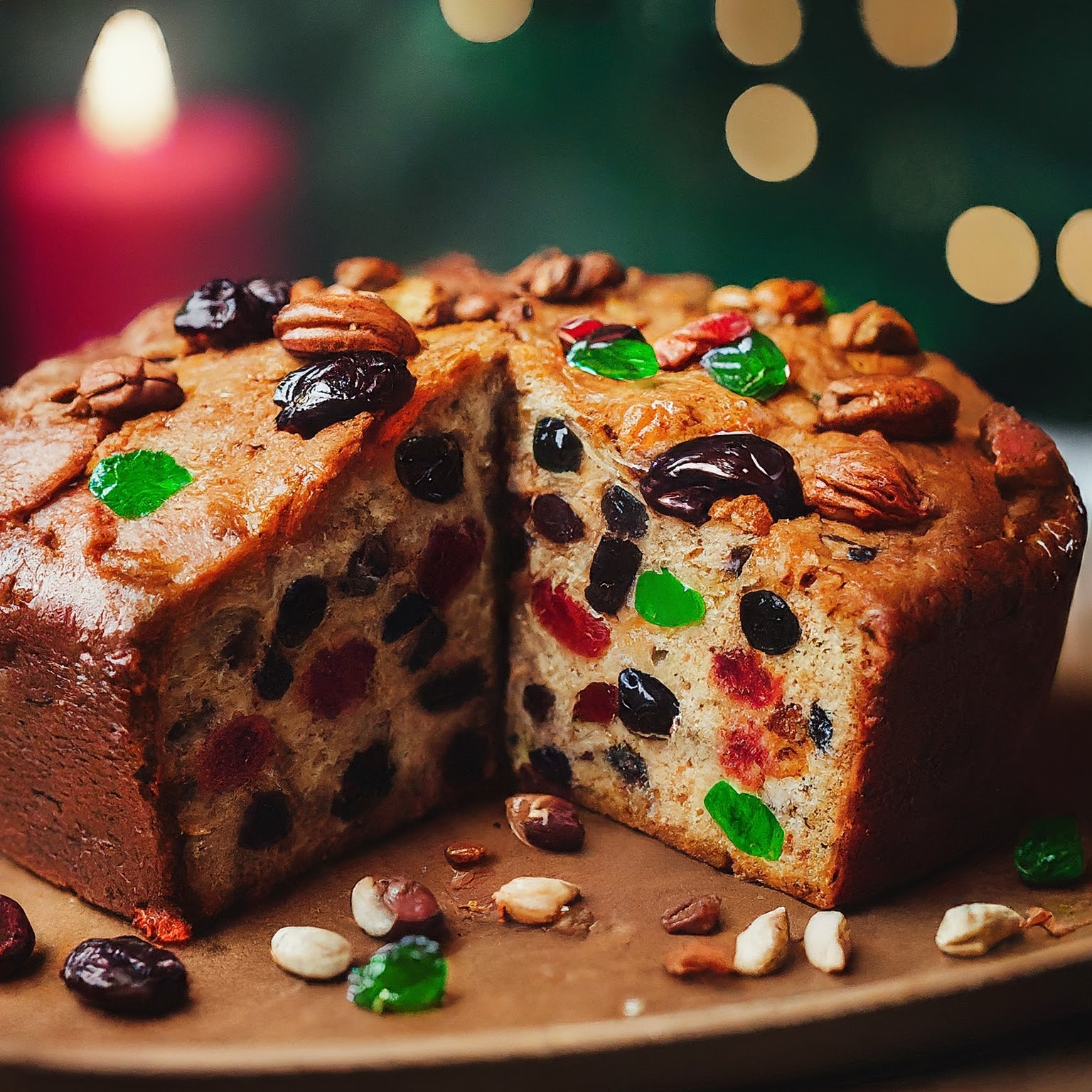
Fruitcake
Fruitcake is a classic Christmas cake with a long history. It’s filled with dried fruits, candied peels, and spices, often soaked in spirits for a richer flavour. The raisins, currants, cherries, and citrus peels are soaked in rum or brandy. Nuts like pecans or walnuts add crunch, and warm spices like allspice, cinnamon, and nutmeg infuse a festive warmth.
20. Stollen
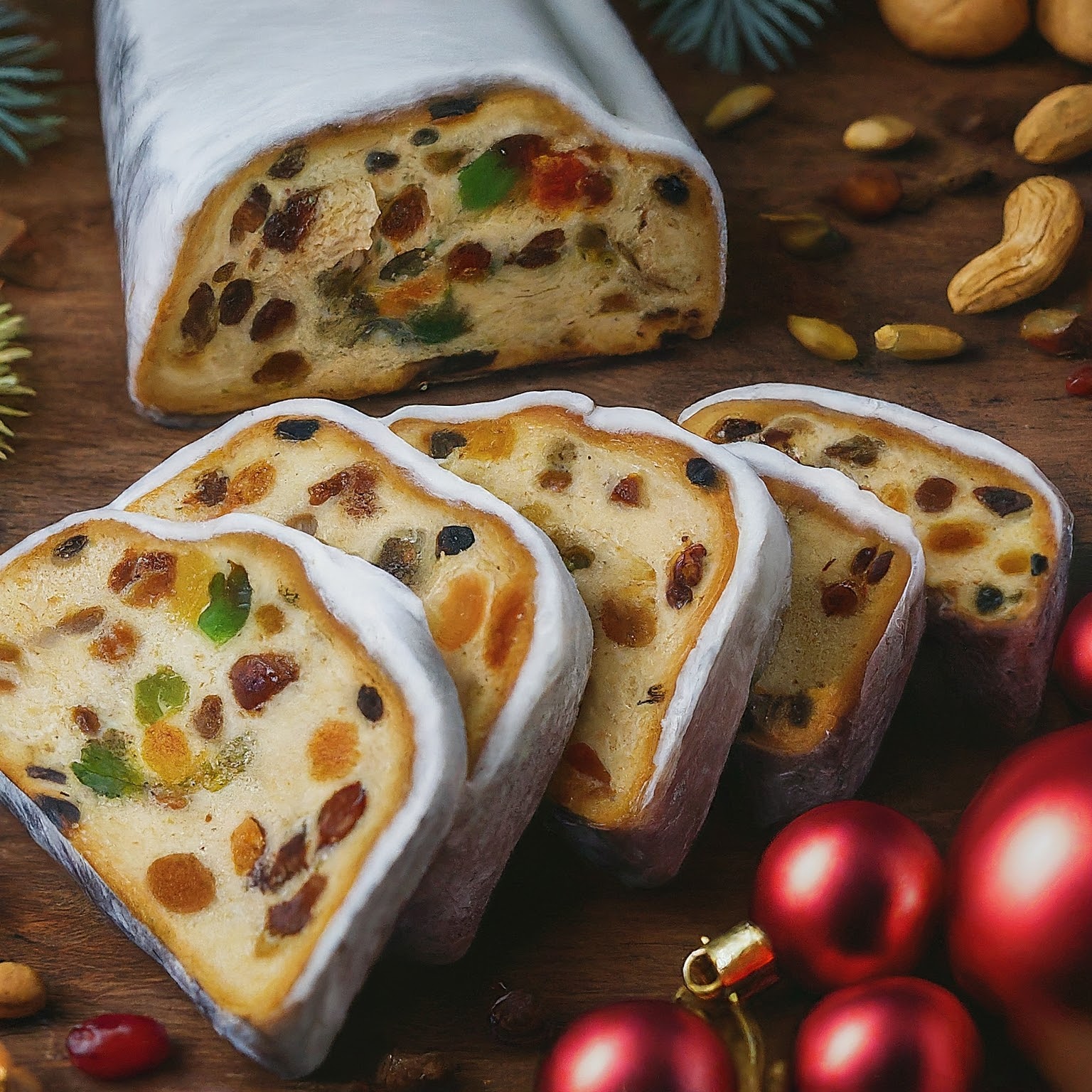
Stollen
Resembling a loaf-shaped cake more than a loaf of bread, Stollen is a traditional German Christmas cake that is mildly sweet and filled with dried fruits, nuts, and marzipan. Brushed with melted butter and dusted with icing sugar, it has a festive appearance. The combination of sweet, buttery dough and hearty filling makes every slice a delightful treat, perfect for modernising your Christmas dessert menu with an international delicacy.
Conclusion
Nothing spreads the holiday cheer better than a good cake, be it an elegant centrepiece at your dinner table or a simple homemade dessert to enjoy with a cup of hot cocoa. Creating a Christmas cake can be an enjoyable family activity where everyone can contribute, bake, decorate, and finally indulge in a sweet, scrumptious slice of their collective labour.
Whether you want to keep it classic with a Fruitcake or try something new like a Pine Tree Forest Cake, there’s an option for every preference and skill level. Encourage your inner baker to experiment, have fun, and create delectable memories with these cakes this holiday season.
Remember, it’s all about savouring the sweetness of love, companionship, and Christmas spirit!
Frequently Asked Questions
What is the traditional cake eaten at Christmas?
The traditional Christmas cake widely eaten is Fruitcake, a rich, dense cake packed with dried fruits and nuts and sometimes laced with brandy or rum. In England, Christmas Pudding is a classic dessert, while Germans enjoy Stollen, and the French relish Bûche de Noël or the Yule Log cake.
How to decorate a cake for Christmas at home?
Decorating a Christmas cake at home can be a fun and creative process. You can use coloured frosting and candies to create Christmas motifs like trees and candy canes.
Additionally, incorporating store-bought edible decorations such as fondant figures, edible glitter, and sprinkles can add charm to your cake. For a more simplistic approach, consider dusting the cake with icing sugar to make it snowy. Whether you opt for intricate designs or a more minimalistic look, these ideas are sure to sweeten your holiday celebration.
Why are cakes eaten at Christmas?
Cakes are as much a part of Christmas traditions as decorating a Christmas tree or exchanging gifts. The custom originated from the medieval era ‘twelfth night cake,’ which marked the end of Christmas festivities. Over time, this morphed into today’s well-loved tradition of baking and sharing decadent Christmas cakes.

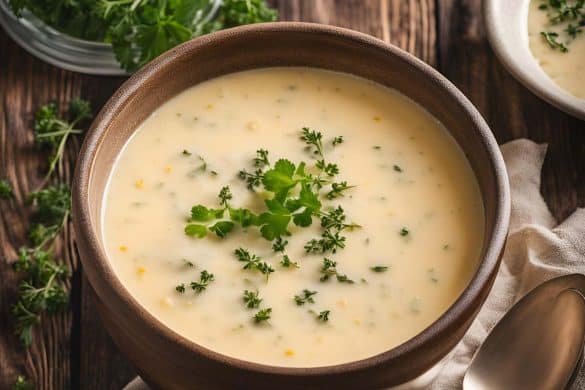


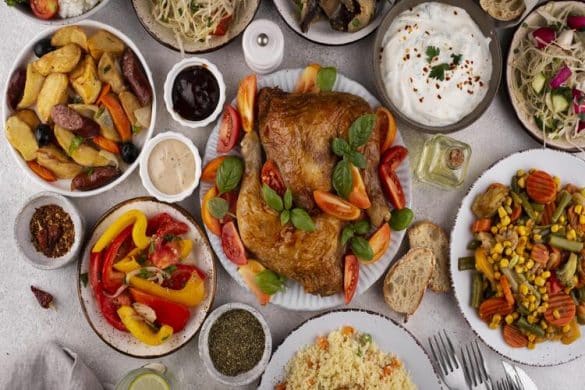
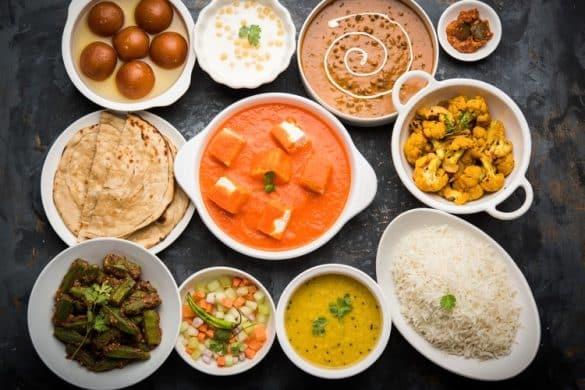



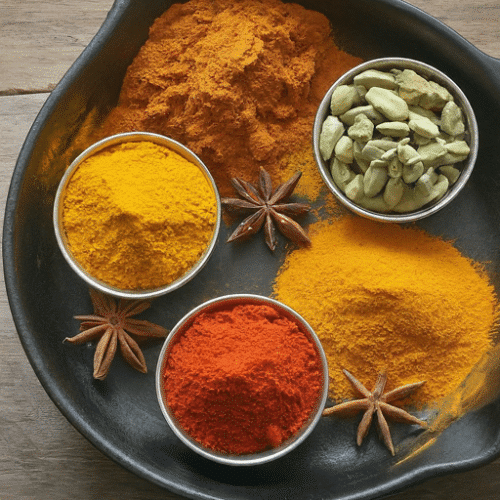

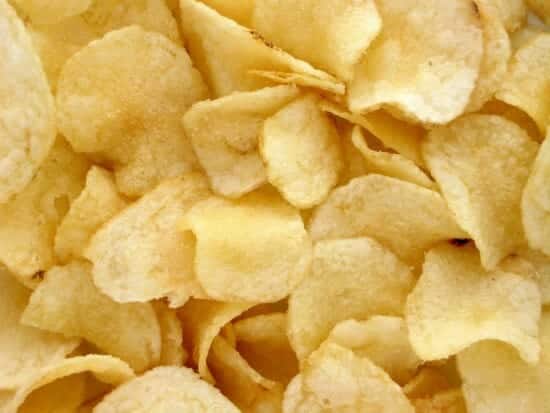
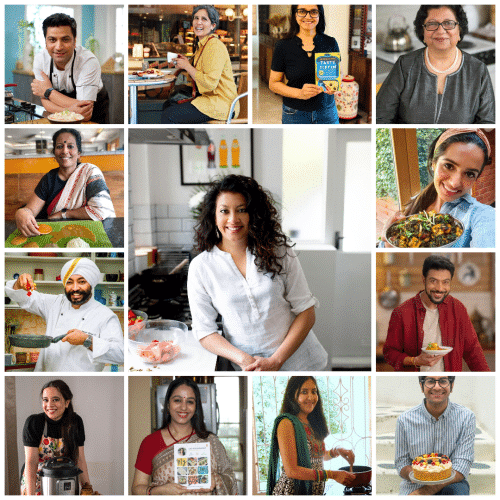
1 comment
Thank you for the information
because this cake recipe is very creative and I’m sure my child will definitely like it